Half a year ago I became interested in owning my first CD player again, a Technics SL-XP 300. I´ve described everything in a post made for soundtrackforum.net so I´ll spare you the details. But my interest continued and I also discovered that many people collect vintage portable CD players. Somehow I´ve started doing the same and right now I own the aforementionend Technics SL-XP 300, a Technics SL-VP 50, a Sony D-220, a Sony D-465 and also a Sony MZ-R 30 (a portable MD recorder) with a continued interest in purchasing used PCDPs (I´d like to own either the Sony D-90 or the Sony D-99 and the Technics SL-XP 700). But today I´ll review the first four PCDPs, focusing solely on the sound quality of their line-outs. I´m ignoring their headphone outputs because they are mostly crap, not very loud and change the sound of an attached headphone. BTW, I´m recommending to you to do the same as their line-outs sound much better. You could amplify these line-outs with a FIIO E6 (NwAVGuy has written a lovely review about it) and subsequently you would get much better sound.
Why am I fascinated in these little CD players? Well, I don´t really know... it´s probably because I love that they are so small compared to fully sized CD players and still sound gorgeous. Judging from their sound they easily beat much more modern, fully portable mp3 players like the iPod. They suck of course in everything else: they are comparatively bulky, prone to skipping, cannot play mp3, etc. But on with the tour: two of the four players I´m gonna review today are not very famous, the other two are recommended regularly. Especially the last one, the Sony D-465, got a very good review by Duncan from Head-Fi.org in this thread: Personal CD players through the Ages. I will show that this review isn´t particularly close to the truth and I´ll also show how important level-mateched listening tests are - as stated in my article "Why Comparisons between Components usually suck".
And in order to proof my findings that CD players aren´t that much different in sound I´ll also provide fully legal samples which contain several examples of their recorded outputs. I´ll also introduce a slightly odd method of showing how I perceive sonic differences with frequency response and staging, instead of describing them with text I´ll turn to pictures instead. Furthermore, I measured them as good as I could with RMAA (the E-MU 0202 USB was extremely helpful).I won´t need to tell you that every recording (either music or test signals) was done with the same cable (Audioquest King Cobra), the same soundcard (E-MU 0202 USB) and exactly the same configuration. I increased the volume afterwards so that every test signal and every musical piece had exactly the same volume as the original files. Please note: I compared their outputs with several pieces of music and the results to the digitally ripped originals from which the CD I used for the players was derived. I didn´t use some fancy, expensive and dubious reference player no one can own - I turned to the originals instead. So my comparison is extremely hard and unfair to these players because several factors are in favor of the digital originals: they havn´t been converted to analogue and back to digital again and they didn´t have to go through an analogue RCA-cable. For the audiophile readers: please be aware that the E-MU 0202 USB is an excellent recording device, especially when used with 24/192 as in my tests, therefore there is no need to doubt the quality of these recordings. To offer the possibility of blind testing I downsampled my recordings to 96 kHz while I upsampled the digital original to 96 kHz, both times with the Weiss Saracon. So every file in my archive has the same bit-depth, samplerate and volume. For comparison how a fully sized CD player from those years sounds I also included samples derived from a Sony CDP 470.
I used the following albums for my listening tests: the first track "Banning back Home" from John Williams' score to Hook because it sounds very good; the player must be able to present the correct combination of timing, crispness, warmth, dynamic and staging. The second track ("Swim") is from Madonna's Ray of Light from 1998 - it was mastered too loud and therefore shows a lot of clipped peaks. The players have to play these more than 0 dBfs peaks without showing distortions of their own. This track also shows a wonderful, round and tight bass which the players have to show with the correct timing. The third track is the Presto from Mozart´s Symphony No. 1, recorded in 1990 by Jack Renner for TELARC. Besides being a fabulous interpretation the player has to show impeccable timing between the players, the most realistic staging (the recording was done with just two microphones) and also a certain amount of crispness: with mediocre components the recording sounds either dull without microdynamics or overly crisp with too much gloss on the strings. The fourth and last track is "Flying Ballet" from Supergirl, composed and conducted by Jerry Goldsmith in 1984 with engineering done by Eric Tomlinson. True to Tomlinson´s style of engineering the recording shows extremely crisp high frequencies and a warm bass - the timing isn´t an issue here, more important is its crispness: the strings and the brass sound extremely brilliant but they shouldn´t sound biting or harsh. The staging is important too because this recording can easily sound flat on the wrong players.
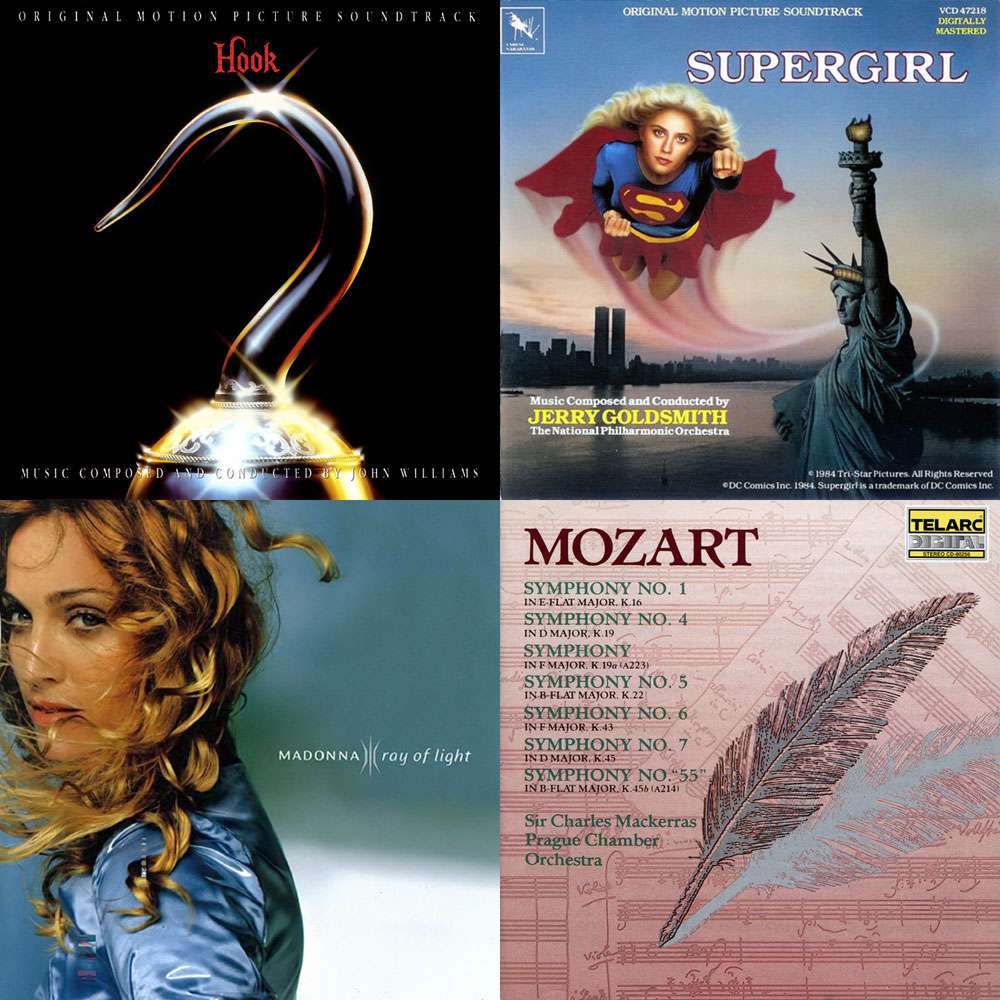 |
| Recordings used for the listening tests |
_________________________________________________________________________________
Sony D-220
This player was released in 1993 and it´s one of the more cheaper portable CD players Sony offered around that time. Despite the low price the build quality is good (apart from the plasticky drive), the sound is more than ok and it´s fast and durable. And I think that it also looks nice:
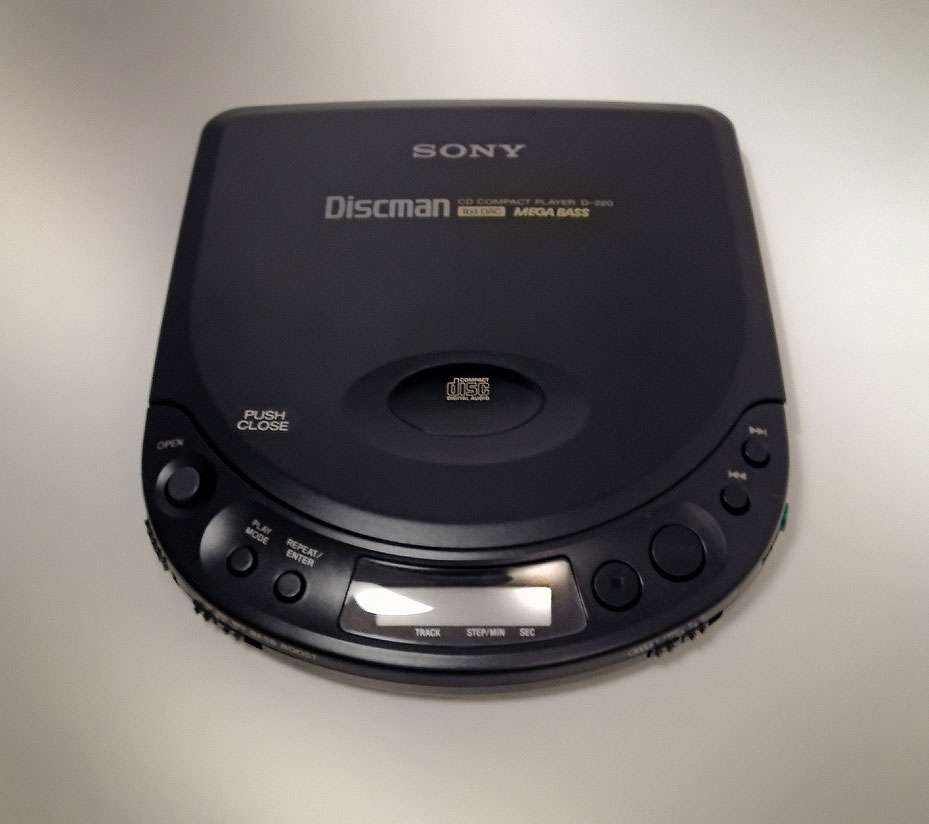 |
| The Sony D-220 from above |
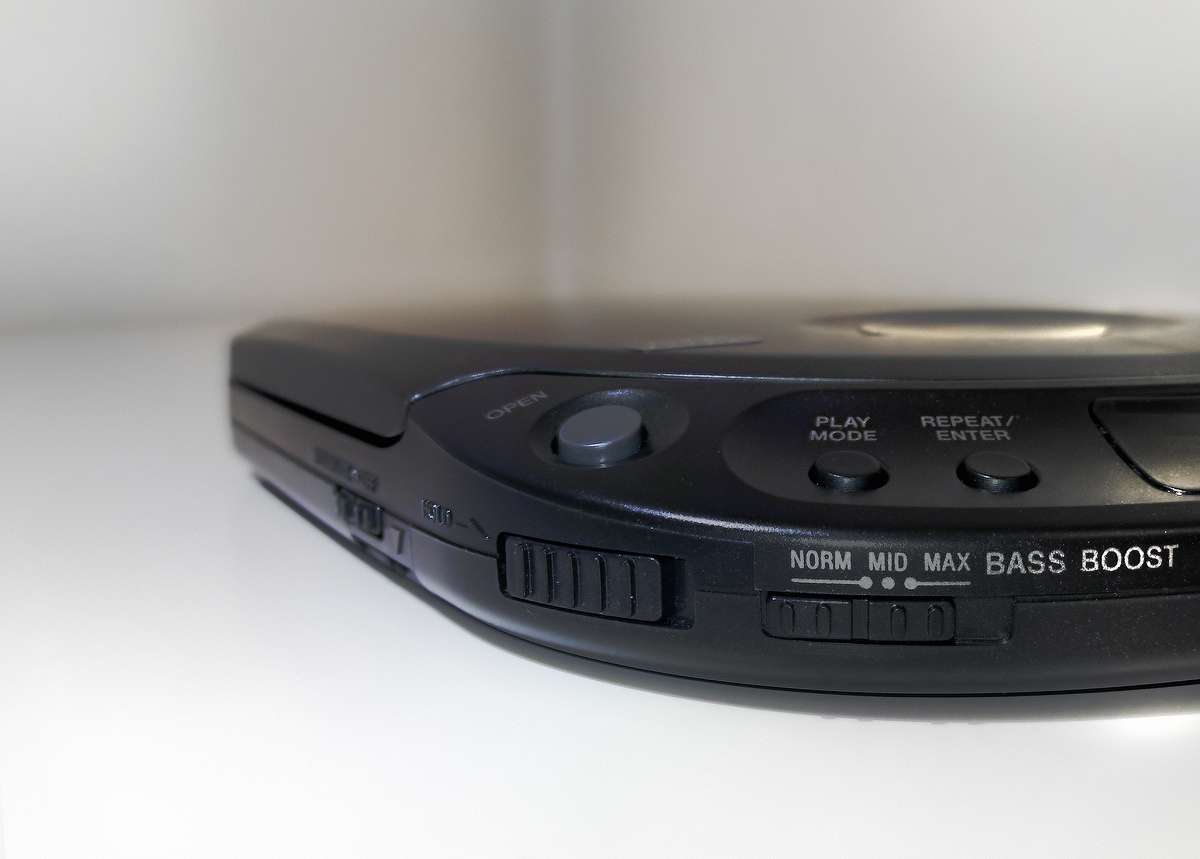 |
| Closeup of the D-220 |
 |
| D-220 Measurments |
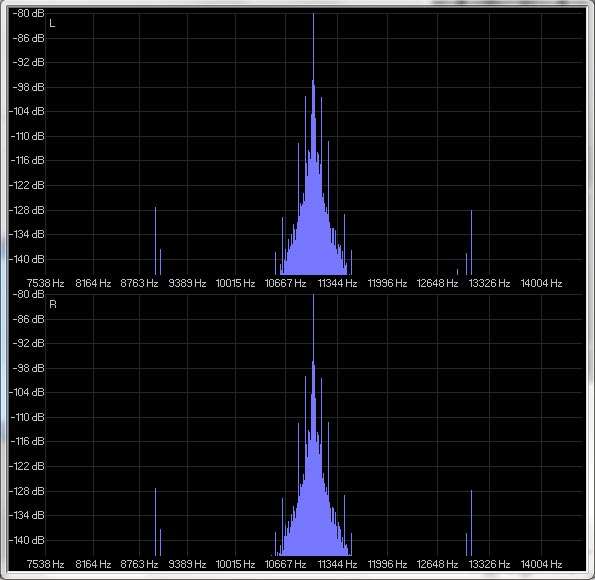 |
| Jitter Performance of the Sony D-220 |
As you can see it looks and measures nice apart from the slightly odd jitter performance. What about the sound? Well, it sounds as nice as it looks: with the track "Swim" upper bass is a bit hollow or pronounced, highs are smooth, the staging with Supergirl is impressive. However, it sounds a bit slow on Swim and Mozart´s Presto, the timing isn´t particularly good, especially the bass seems to "follow" the rest. With this player I´m always wondering about monaural signals (like voices, solo instruments, etc.): they are standing very clear and elevated and have a beautiful articulation. Voices are sounding like they are standing right in front of you while the rest of the stage is very close to the stage of the digital original (even though it´s not very stable and a bit flatter). It also adds a glowing sheen of additional colour to every audio material, it sounds more beautiful then the original. In general, the lower frequencies seem to be blown up on all examples in combination with a slightly unstable spatial impression at those frequency areas. Compared to the original the Presto sounds a bit muffled and less fast while Supergirl sound a bit too cozy. Still, I´d say that this player does sound relatively good and although it doesn´t present the original sound its warm, pleasant and coloured sonic signature will probably make many people happy (including me).
_________________________________________________________________________________
Technics SL-XP 300
This player was released in 1991 and is the only one of this quartet that´s using true 18 bit multi-bit converters (all others are using 1-Bit converters). The drive is different too: it contains many parts made out of metal and includes a true glass laser lens (the Sonys use much more plastic in their drives in combination with a plastic lens). The drive can play everything, from overly long CDs to CD-Rs and is a prime example of reliability. Which sadly cannot be said about the rest: from my experience I know that parts used on the circuit board tend to age faster then usual when exposed to old age or heat. But any of this doesn´t matter because as my first player it still has a place in my heart.
 |
| Technics SL-XP 300, playing DG ReComposed Vol. II (connected to my HD-448 for the picture only) |
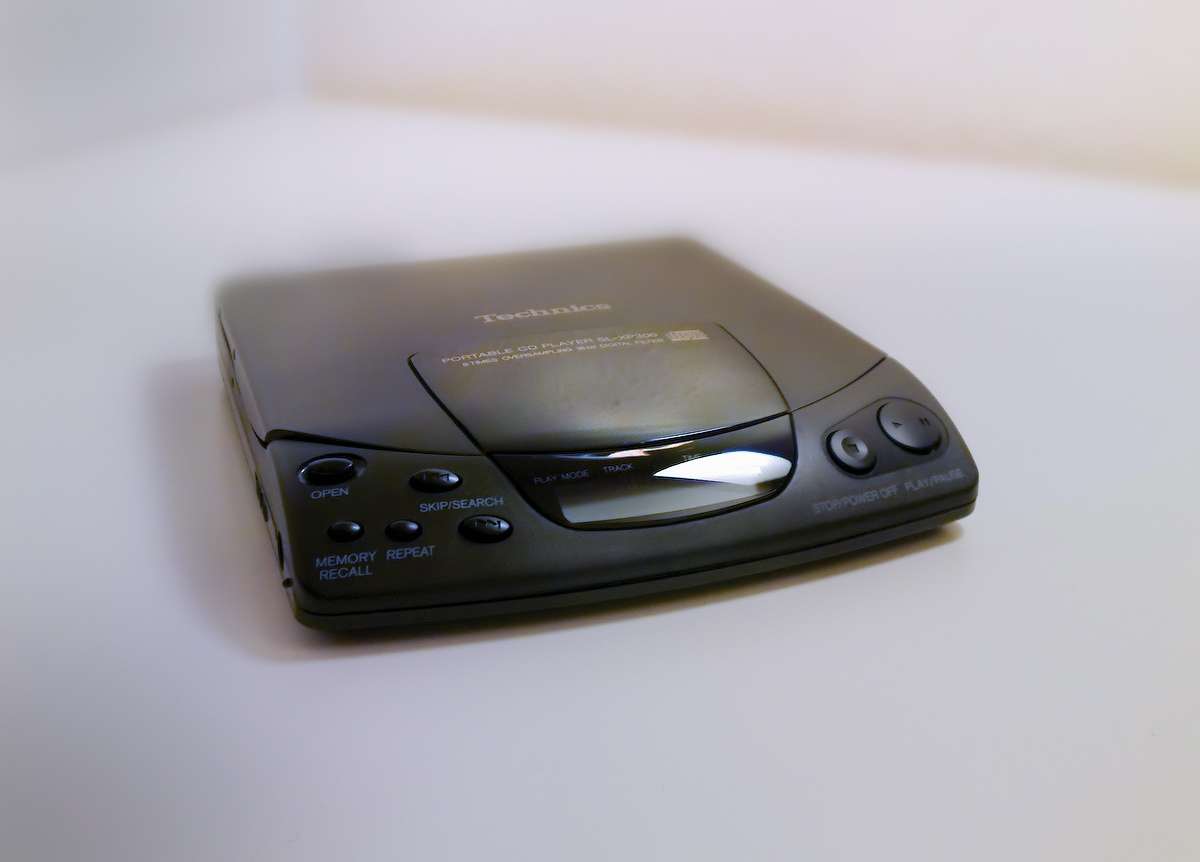 |
| Technics SL-XP 300: still a beauty IMO |
 |
| I know... this photo isn´t much different... have I told you yet that I love it? ;) |
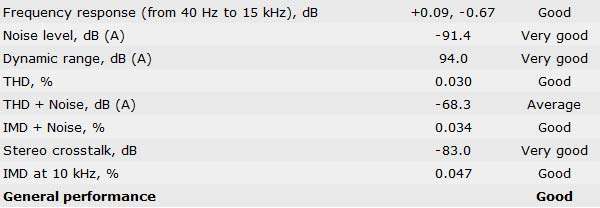 |
| Technics SL-XP 300 measurments |
 |
| Technics SL-XP 300 Jitter performance |
Measurments are ok but not mind boggling. Jitter is low enough, it won´t be discernible (below -110 dB) although it does show a bit more than usual high frequency jitter. Still, this is a portable player - I think it measures well, especially regarding its age of 21 years. What about the sound? Yes... I´m afraid it isn´t as good as I remembered it for all those years. The sound I remember was like this: dynamic, a bit too loose, pleasant with a nice golden sheen. After listening with my HD-600 though I became aware that it doesn´t do anything wrong really, it just sounds a bit too friendly. My impression is that every track I tested it with sounded a bit weak on the mids without really deep bass while having a tiny bit too much gloss on high frequencies (could be wrong about that because of the perceived recessed mids). The decreased mids are also the reason for missing sonic colour, the dynamic spark is missing. Staging is a bit flat and distant but otherwise correct while (despite diminished frequency ends) the dynamic seems to be a bit too explosive. Overall the sound is pleasant, smooth, friendly and sadly not very truthful.
_________________________________________________________________________________
Sony D-465
The build quality on this one is a bit better then usual - it has a metal lid and offers the best "Hold"-function one can imagine: you simply cover its buttons by moving a metal slider. This also is the only one of the bunch to offer Electronic Shock Protection (ESP) so it won´t skip when you go around with or decide to do some sports with it. It even offers a digital output via Toslink so it can be connected to a digital amp or a digital recorder. Compared to the former two it is relatively bulky and not very beautiful. Sadly the true build quality is awful: after I finished my tests the drive broke apart (the clamp holding the CD in place deattached itself which seems to be quite common with this drive, the adhesive for the clamp isn´t very durable). Therefore I´ve purchased a used replacement drive but I haven´t built it in yet. I expected more from this player after the glowing review at Head-Fi.
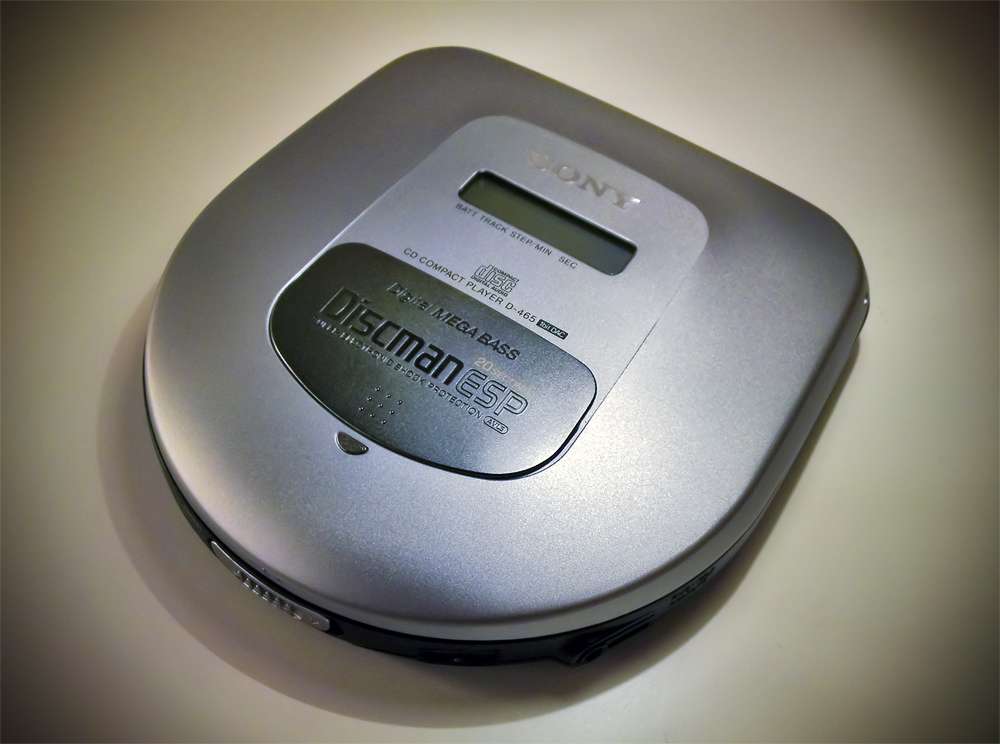 |
| Sony D-465 |
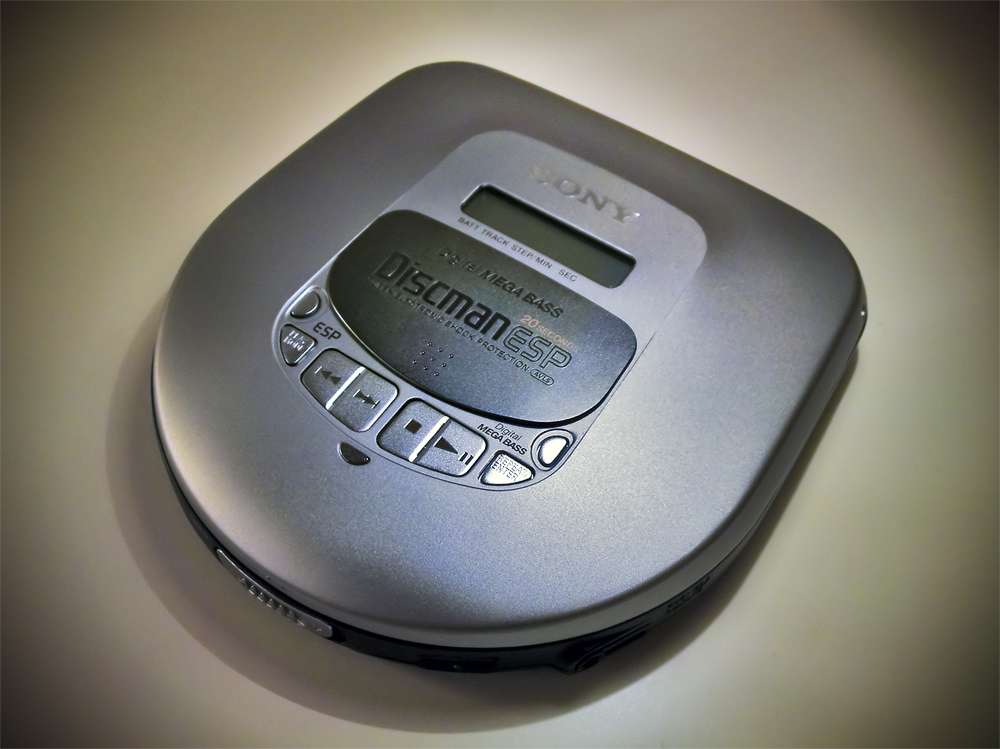 |
| Sony D-465: slider opened |
 |
| Closeup of the D-465 |
 |
| The D-465 with its leather case |
 |
| Sony D-465 measurments |
 |
| Jitter performance of the Sony D-465 |
Yikes! Jitter is bad even though it measures extremely well on everything else. The sound... well, it´s not very good. It´s in fact the worst sounding player of my quartet: deep bass is flaccid on Swim and Supergirl, upper bass is boomy on every track, mids sound pinched and unpleasant (Madonna sounds thinner, the Mozart recording looses its appeal), voices are too forward and much too crisp. Highs in general are rather tinny while the stage impression seems constricted and flat (not counting the forward voices). Example: the very balanced recording of Mozart's Presto gets too thin and too brittle. The only track that sounded ok with all the added, aggressive & artificial colour was Madonna's Swim: because of the slight loudness-y sound it seemed to be more dynamic, engaging and impressive. But then Supergirl came and the impressive dynamic turned into zippy, sharp and piercing high frequencies. This player is a huge disappointment, its reputation is far from being deserved. For me this one is a personal flop.
_________________________________________________________________________________
Technics SL-VP 50
Two words: huge and bulky. This "portable" player is enormous! Not many people know it, probably because it also can play Video-CDs (yes, it has a video-output) and the one test I´ve read (from german magazine STEREOPLAY) wasn´t very favourable - one reason for this probably was that they didn´t do level-matched testing. I´m also guessing that not many people can take a player serious if it can play visual media too. Technics probably assumed that because of its size it wouldn´t be used much on the go so they equipped it with an infrared remote in order to be used at home. Build quality is impressive, it has the same drive as my Technics SL-XP 300 (only updated a bit) and even the lid is made out of metal. Inside one can find two mainboards: one for audio and one for video (this explains the size and the weight). Today everything would fit on one tiny mainboard but this player was released in 1995 when video decoding via hardware wasn´t as efficient as it is today. Back then it also was a very expensive piece of hardware: it did cost a whopping 450,- Euros when it was released to the market. I only payed 22,- Euros for it (incl. shipping) - and this was for a brand-new and unused exemplar! The person who offered it on eBay sold roughly 20 brand-new pieces of this player and thank God I was one of the lucky ones.
 |
| The Technics SL-VP 50 |
 |
| From the left |
 |
| Technics SL-VP 50: rear closeup - and what a fat ass that is! |
 |
| Yes, the Technics SL-VP 50 is huge! |
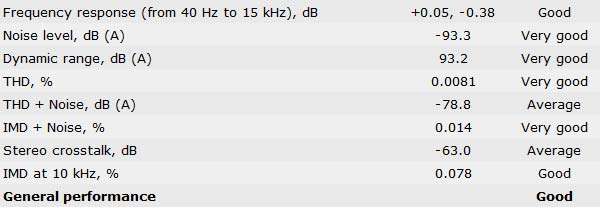 |
| Measurments of the Technics SL-VP 50 |
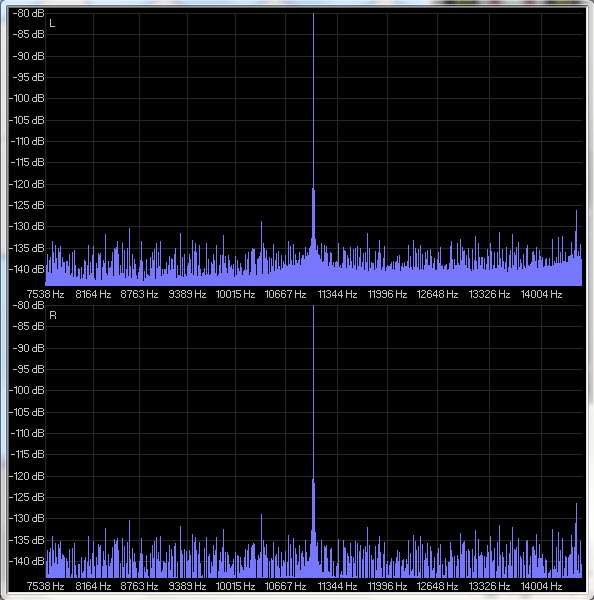 |
| Technics SL-VP 50 jitter performance |
Just as with the XP-300 the measurments are ok but not awesome though the jitter performance is excellent. As is the sound: of all reviewed players this is the one that sounds the closest to the digital original. Precision is good, staging is a bit too compact but apart from this it´s a virtually identical clone of the original, the overall frequency response is a bit light on deepest bass and highest high frequencies. The overall timing is a bit slower but consistent over every frequency band. Yes, the only major thing I´d critisize is that it sounds a bit boring. It sounds as if being bored just so slightly by any kind of music (if it would be alive) and it also sounds a bit inflexible or static. But it never lies, it doesn´t sound thin or constricted, there is plenty of space around instruments in the orchestral recordings. On Swim the punch is diminished and the Presto from Mozart sounds a tiny bit too muffled but Banning Back Home from Hook almost sounds like the original. This is an impressive little (big) portable player!
_________________________________________________________________________________
Sound "pictures"
And now, as I promised above, I´m gonna show you some pictures, pictures of how I perceive the sound of these players to be. Two categories will be mentionend: perceived frequency response and perceived staging or room impression. The expression "perceived" is important here as you will be seeing plots that don´t have anything to do with the reality, it´s just what I hear. But words are an imprecise instrument for explaining sound when pictures can do so much better. So I try to explain the perceived sound with the usual frequency plots but manipulated them to show what I hear instead (not what I measured!). The stage impression will be visualized by a photograph of an orchestra in front of a stylized human head. The orchestra is then morphed into an appropiate form to describe what I´m hearing. I´d like to show you the perceived timing too but I haven´t found a simple, visual expression for it yet.
 |
| The perceived differences between the players, visualized with frequency plots |
 |
| The reference stage impression: the perceived virtual orchestra sounds wide with appropriate depth |
 |
| Sony D-220: slightly forward monaural signals and a tiny bit flatter |
 |
| Technics SL-XP 300: flatter and more distant sounding |
 |
| Sony D-465: constricted perceived stage impression with very forward voices and overall flat room |
 |
| Technics SL-VP 50: just a bit more compact |
I hope that you, dear reader, find those pictures as amusing as I did while creating them. And didn´t I make the loveliest pictures of these portable CD players? Anyway, the result of my little article is that the Technics SL-VP 50 is the winner when all differences regarding voltage outputs are removed and the players all have the same amplitude. Under these circumstances the Sony D-465 is a most disappointing looser. Oh, I forgot: all players were at their best because I cleaned their drives (including the several laser lenses) and cleaned every flat cable inside them and also every plug of the RCA connection I used (on the players, the soundcard and the cable). I think my results are even more impressive because the SL-VP 50 had to fight against the original file - that it managed to sound so very close to it was a surprise even to me. BTW, I mentioned a fully sized CD player from Sony, you probably ask yourself "Where did that one go?" Well, it had the most horrible sound of them all, it did everything wrong and sounded flat and uninvolving so I wasn´t in the mood of displaying its results here. But you can listen to it yourself with the files I´m now gonna provide to you. Attention, illegal file downloaders: this archive isn´t for you! You won´t find not one full track in it, only fully legal 30-seconds-excerpts of the tracks I mentionend during my review. To anyone else: you´ll find the mentionend examples and also my RMAA-measurments, just click on the properly named HTML-files and you´re gonna see all the plots and fitting decriptions. For the DBT lovers out there: most of the tracks are properly aligned so you can play them with foobar2000 and find out if you can hear a difference (Mozart cannot be used since I made some editing mistakes there). To everyone else expecting huge differences in sound: don´t be disappointed; while my descriptions are accurate you probably won´t hear anything when you give those files a first listen. There are two reasons for it: 1. you have to be experienced to hear those differences and 2. the differences between HiFi components are not that big once amplitude differences are removed (as is shown by comparing them to the original files).
P.S.: Do I have a personal favourite? Yes, I do. It is the Sony D-220 because its sound is very pleasant, with a colourful timbre and I can listen to it for hours. It´s also relatively small, not very heavy and can be moved around with ease. The winner of this test, the Technics SL-VP 50, may be the best but it´s bulky and not played in. Then, because it´s so good and precious to me, I don´t want to stress it much. I´d like to keep it in pristine condition for many years and therefore I use the more readily (for cheap money) available Sony D-220. It may not be the most truthful player out there but sometimes even I love a player that lies so enjoyable. And there goes my pseudo-objectivism... :)



Thanks for taking the time to write this!
ReplyDeleteA D-465 owner here. I saw in your later articles that you started listening to the D-465 and D-335 more. Do you still prefer the D-220, or has the D-465 won you over?
ReplyDeleteNot really. In fact, I rarely listen with portable CD players anymore. They just don't sound as good as portables from FiiO, Smartphones or even portable MD units. But IF I use a portable CD player, it usually is the Technics SL-VP 50.
DeleteThis is interesting... but I don't think I can tell the differences in the samples you provided!
ReplyDeleteIt's ok. You're lucky, if you can't hear those - admittedly tiny - differences you can choose more hardware for other factors than sound. Quite an advantage I think.
DeleteThe Sony D-22 is my personal favourite.
ReplyDeletejust found my xp300 in loft after 20+ years... plugged in, found a music cd - not easy... but it's still working... can't fault the build quality.
ReplyDeleteWow, that's fantastic!
DeleteGreat article! My first portable player was also a SL-XP300 and I still hold so many memories in my heart!
ReplyDelete